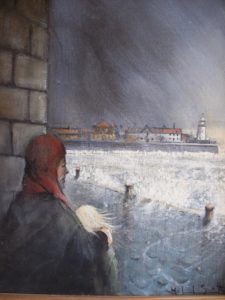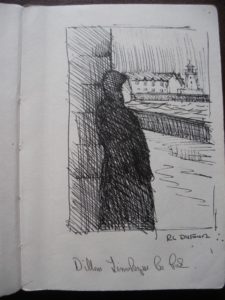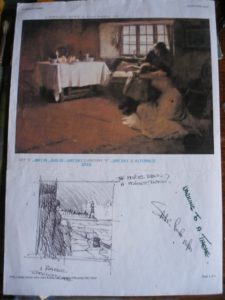The reason will often be apparent in the work you produce. For instance, artists will create portraits of pets that are no longer with us. Portrait painters work to a commission. Many paint for the sheer pleasure of creating something visual. Painting is also ideal therapy.
It can take you completely away from ‘ life’s many problems ‘ for a while. Every time you pick up a brush or pencil, do you stop to consider why you are doing this? A professional artist will paint for money, and that has a marked effect on what and why they paint a particular subject.
In the early 70s I was a member of the Leicester Sketch Club. Occasionally our monthly meetings involved a guest critic. One regular visitor was Ronald Moore, the then art critic for The Leicester Mercury newspaper. He was a fiery gentleman who spoke his mind. He would spend some time perusing the work on the easel, and then ask the question of the artist “why did you paint this?”
Mutterings, silence and often tears from lady members would follow. I quickly came to realise that, if you cannot stand criticism you are in the wrong business. You learn to sort the good from the bad and use it constructively.
I rarely go out looking for my subjects. They come to me. I see something which is visually stimulating, and I have to pass that pleasure on to others who possibly cannot see it. For instance, I will ask non-painter friends ” Did you see that amazing sky last night?” and they will have no idea of what I am talking about, although the sky occupies synthroid some 50% of their visual world on a daily basis, especially here in Norfolk. As artists we are privileged. We tend to see things others do not.
Many of my more ‘obscure’ works come from other influences and below is one such painting. Thirty years ago I was holidaying in County Cork with my family, and we sheltered from the rain in Dillon’s quaint cafe in Timerlegue.
There were many small pictures hung on the walls, but one in particular caught my attention. It was a small etching depicting a fisherwoman standing on a windswept quayside, looking out to sea where a storm receded into the distance. It was not for sale, but the lady kindly let me make a sketch of it.
Many years later I came across the lovely painting ‘A Hopeless Dawn ‘ by Victorian artist Frank Bramley, which hangs in the National Gallery.
It depicts a young wife being consoled by her mother. There is an untouched meal on the table and a candle smokes as it dies out. Through the window of the cottage a storm can be seen receding into the distance. Her husband is clearly not coming home. The sentiment is the same as the Timerlegue cafe print by Balfour.
Why does art no longer tell stories? The old masters painted imaginary scenes from the Bible. Victorian artists used the romantic poets for their inspiration. Now, some fifty years on, I have finally painted my own version of ‘A Hopeless Dawn’ which hangs quietly in my hall among paintings by my artist friends who have long gone. That is just one example of the many reasons why I paint.
Michael Smith


